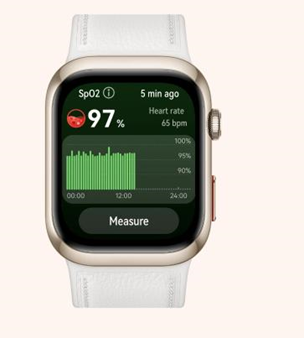Firefighters try to extinguish a wildfire in Athens, Greece, on 5 August. New methods allow scientists to more accurately describe the role of climate change in promoting such extreme events.
Michael Varaklas/AP images
The hundreds of climate experts who compiled
the mammoth new climate report released today by the U.N. Intergovernmental Panel on Climate Change (IPCC)
had to work under unprecedented pandemic conditions. At vast meetings forced online, scientists wrestled with how to convey the extent of the global crisis and the urgent need to act. It was uncanny to see “the echoes of one crisis in another,” says Claudia Tebaldi, a climate scientist at Pacific Northwest National Laboratory and one of the authors of the report.
The report paints an alarming picture but emphasizes there is still time for swift action to mitigate the worst of the projected impacts of climate change. Current average warming is now estimated at 1.1°C compared to preindustrial records, a revision based on improved methods and data that adds 0.1°C to previous estimates. Under every emissions scenario explored by the report, average warming of 1.5°C—a major target of the Paris climate accord—will very likely be reached within the next 20 years.
That timetable “underscores a sense of urgency for immediate and decisive action by every country, especially the major economies,” says Jane Lubchenco, deputy director for climate and the environment at the White House Office of Science and Technology Policy. “This is a critical decade for keeping the 1.5°C target within reach.” And the projections mean countries should come to the United Nations Climate Change Conference, scheduled for November, with the most “aggressive, ambitious” targets possible, she says.
IPCC’s sixth assessment report is the first of three major climate assessments scheduled to be released by the body over the coming year, each approved by representatives of all 195 member states. Today’s report offers a refined and updated statement of the scientific consensus on anthropogenic climate change and projections on expected warming. Later reports will expand on the details of how climate policies can reduce emissions and what actions need to be taken to adapt to extreme events such as flooding, heat waves, and drought.
The 8 years since the last assessment report in 2013 have brought substantial advances in climate science, including powerful new climate models and more comprehensive data sets. Evidence from ancient climates has offered a way to constrain estimates of what researchers call

climate sensitivity
—the anticipated warming caused by concentrations of atmospheric carbon dioxide that are double those present in preindustrial times. The IPCC panel now estimates a global average temperature rise of 2.5°C to 4°C, a narrower range than the previously estimated 1.5°C to 4.5°C.
The report’s new projections and estimates are based, in part, on observational records that cover more ground—including more data from the rapidly warming Arctic. And records from eight additional years of global warming mean researchers have had more time to “see the climate change signal developing,” says Nerilie Abram, a climate scientist at Australia National University.
In a departure from the last comparable IPCC report 8 years ago, this report’s range of emissions scenarios includes projections of population growth, urbanization, and other human societal factors. In all, the report sketches out five different “Shared Socioeconomic Pathways,” with emissions ranging from very low to very high. The pathways represent a change in focus from previous projections, which focused purely on different emission levels and concomitant warming.
In the best case scenario, with the world reaching net zero emissions by 2050, warming is projected to peak midcentury with an anticipated 1.6°C warming. Even in this scenario, it is likely the Arctic will see at least one late summer free of sea ice by 2050. And in the worst case scenario, warming will very likely reach 2.4°C by midcentury and continue to escalate to 4.4°C—and potentially as high as 5.7°C—by 2100. Current greenhouse gas emissions are on the mid- to higher trajectories, Imperial College London climate scientist Joeri Rogelj said at a press briefing, and climate policy commitments still fall short of achieving the lowest emissions scenario: “Let’s be clear about the work that still needs to be done.”
Too much focus on targets like 1.5°C can backfire if they are seen as precipices beyond which there is no redemption, Tebaldi says: “People feel this sense of disempowerment.” The reality, she says, is that these targets sit on a continuum where “every little bit of warming counts.” For the first time, the report elaborates on the details of how each increment of warming is expected to play out in regional impacts and extreme events such as flooding, heat waves, droughts, and fire. Past IPCC assessments have focused on averages, Abram says, but “people don’t live in the global average.” Warming is fastest in the Arctic; flooding is rampant through Europe and Asia, whereas drought ravages the western United States and Africa. And climate change is expected to give extra potency to existing natural variability. With 1.5°C of warming, for example, high temperatures that would be rare without climate change could occur four times a decade; at 4°C, new heat extremes could be seen nearly annually.
Regional assessments show climate change has already led to extremes in heat in nearly every global region, as well as record precipitation and drought in others. “No region is spared,” says Sonia Seneviratne, a climate scientist at ETH Zürich and one of the report authors. “We are starting to see events happening which would have had near zero probability of happening without human-induced climate change.”
Advances in understanding the role of climate change in extreme events have been dramatic since the last report, says Francisco Doblas Reyes, a climate scientist at the Barcelona Supercomputing Center and an author of the report chapter that links global climate change to regional effects. He says it’s now possible to link events such as the recent heat wave in the Pacific Northwest to broader climate change. That sends the message that “climate change is here now,” he says.
Some changes to the planet are locked in, regardless of how much humanity reduces emissions over the coming decades. Melting of glaciers and ice sheets and thawing of permafrost is now “irreversible” for decades or centuries to come, the report notes. Meanwhile, the warming, acidification, and deoxygenation of the world’s oceans are set to continue for centuries to millennia. Continued sea level rise, now estimated at 3.7 millimeters each year between 2006 and 2018, is also inevitable: Over the next 2000 years, oceans will likely rise by 2 to 3 meters if the planet warms by 1.5°C, and up to 22 meters with 5°C of warming.
The impact of anthropogenic climate change on the planet is “unprecedented,” according to the report, reflecting a confidence and certainty in language that has ramped up considerably from previous IPCC assessments. Where early assessment reports described uncertainty over the role of humans in warming the planet, and the 2013 report described human influence as “clear,” the new report describes the anthropogenic cause of climate change as “unequivocal.” Scientists tend to be “conservative” in their language, says Don Wuebbles, an atmospheric scientist at the University of Illinois, Urbana–Champaign, “but it is time for us to step forward and quit being so conservative and just say, this is an extremely important problem that humanity has never faced before.”









